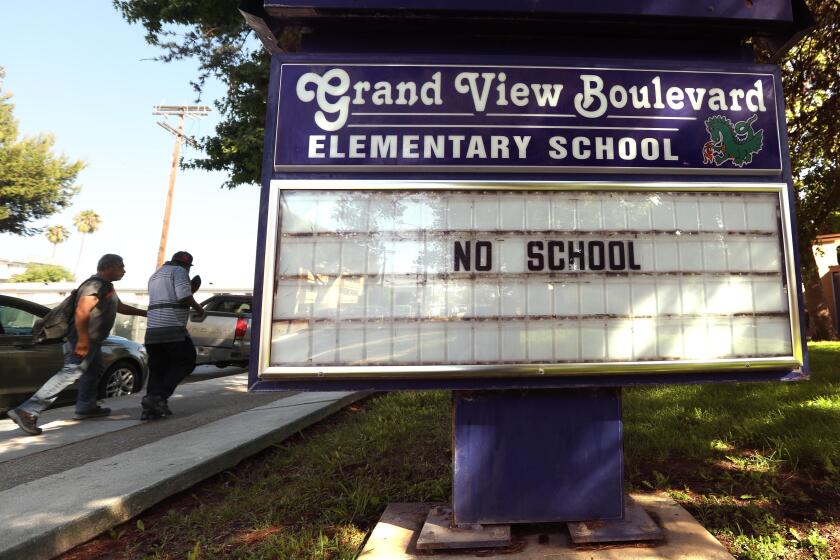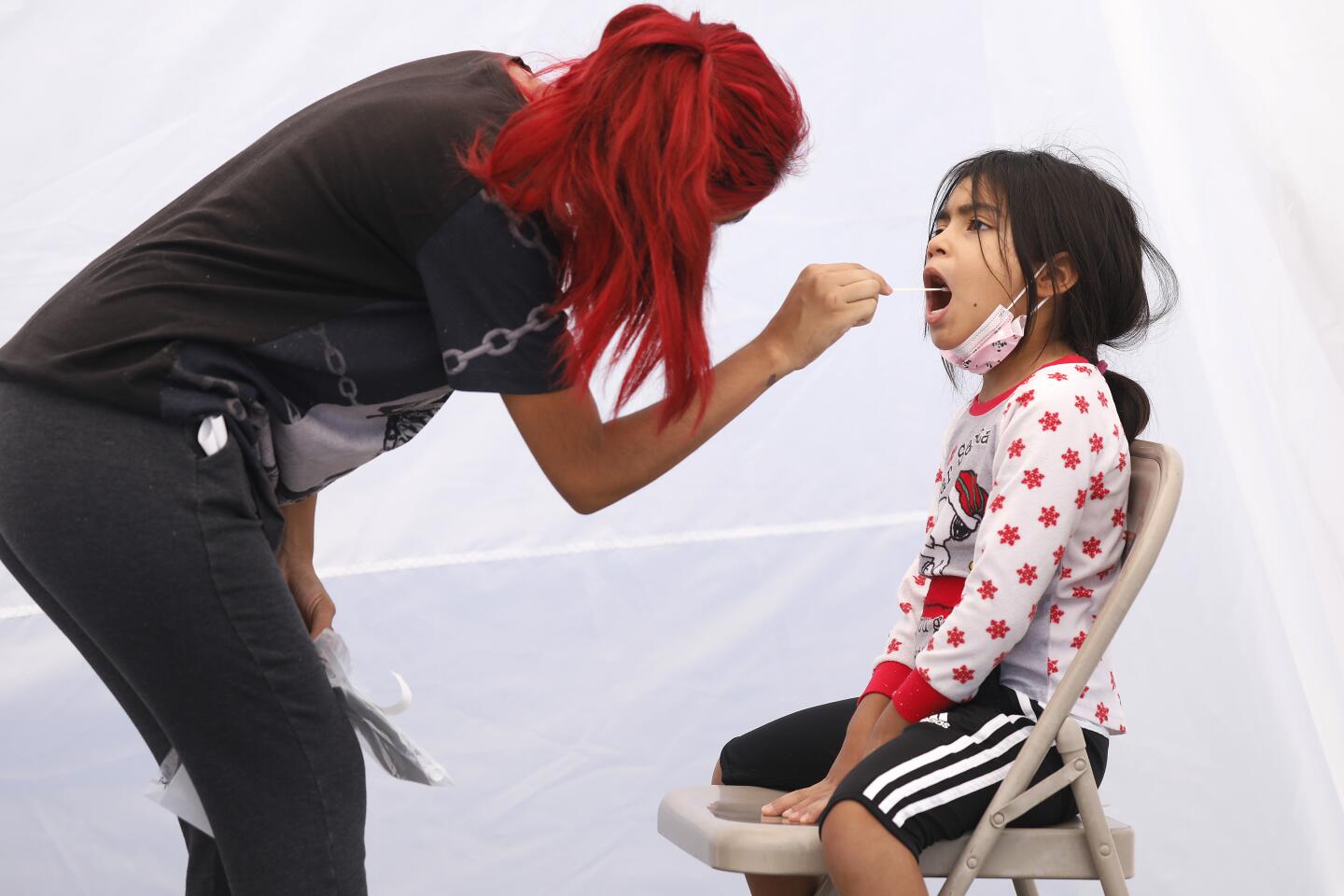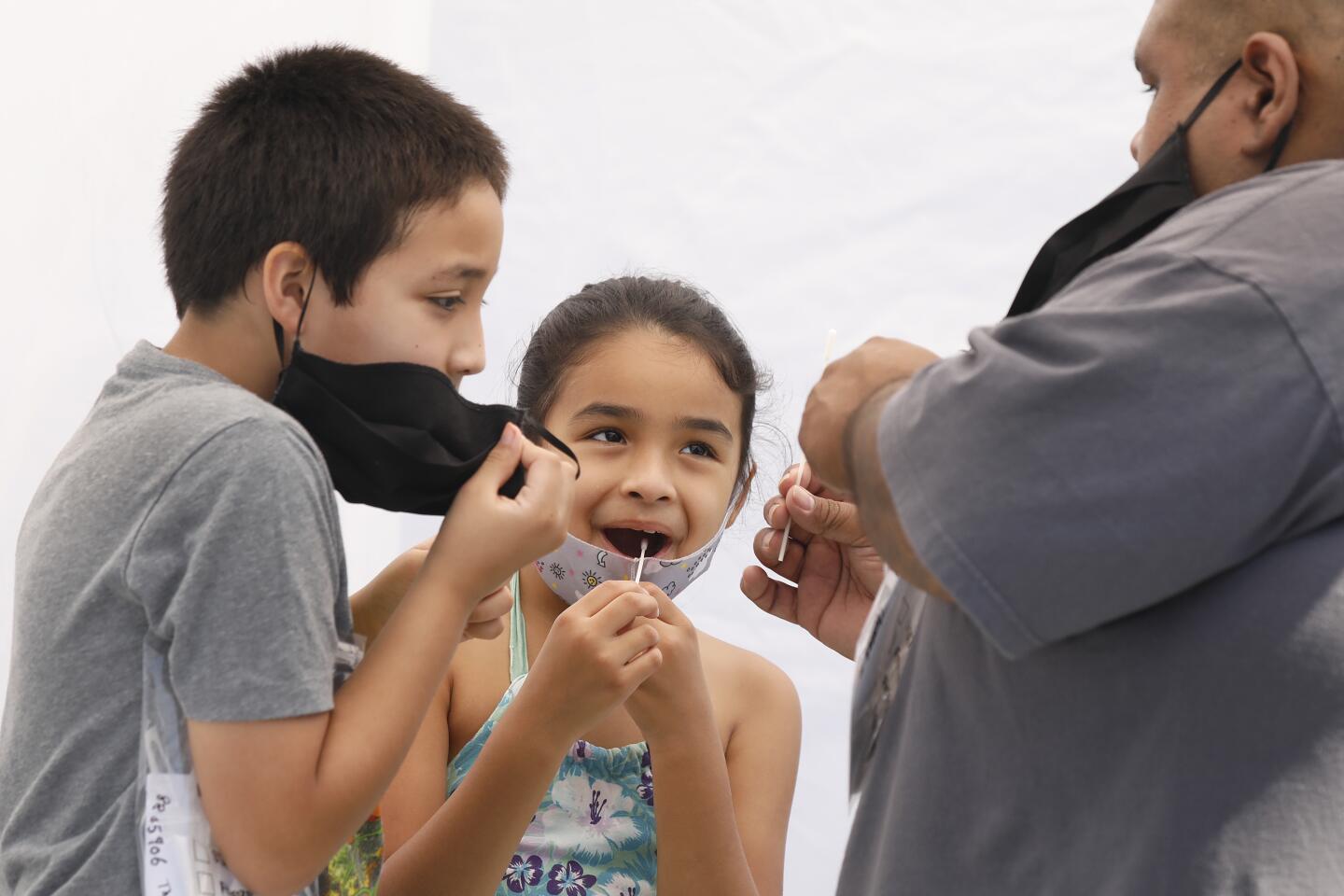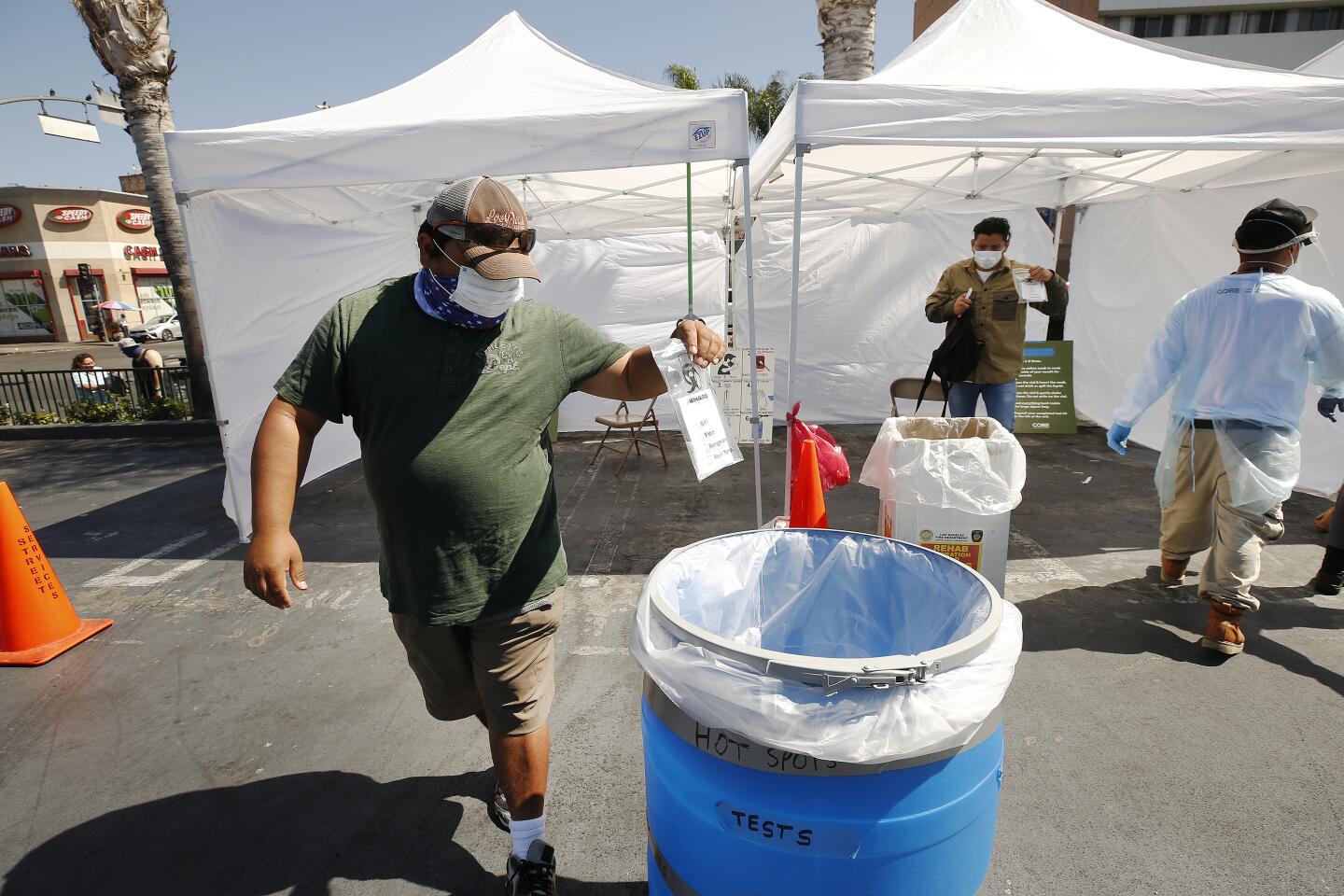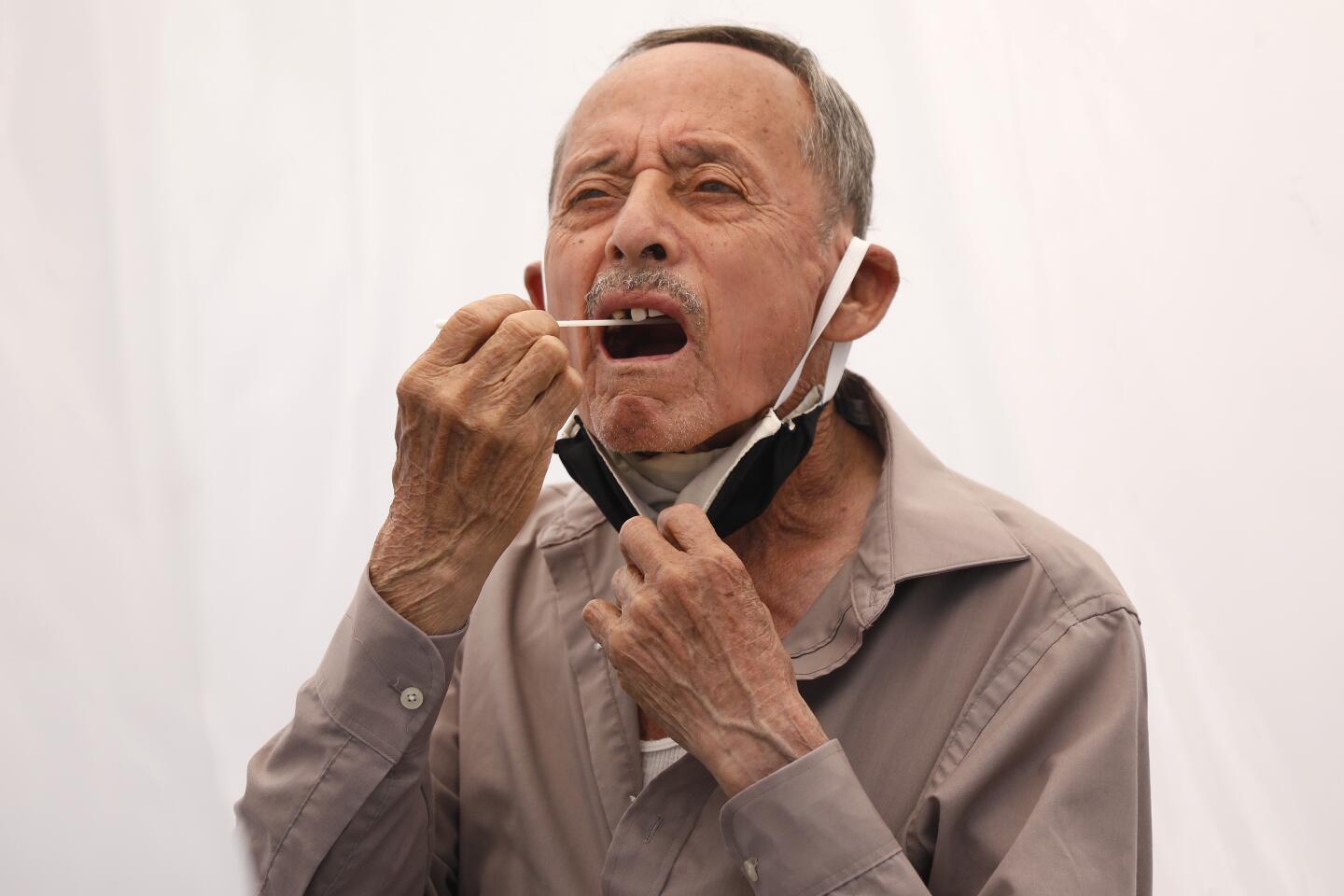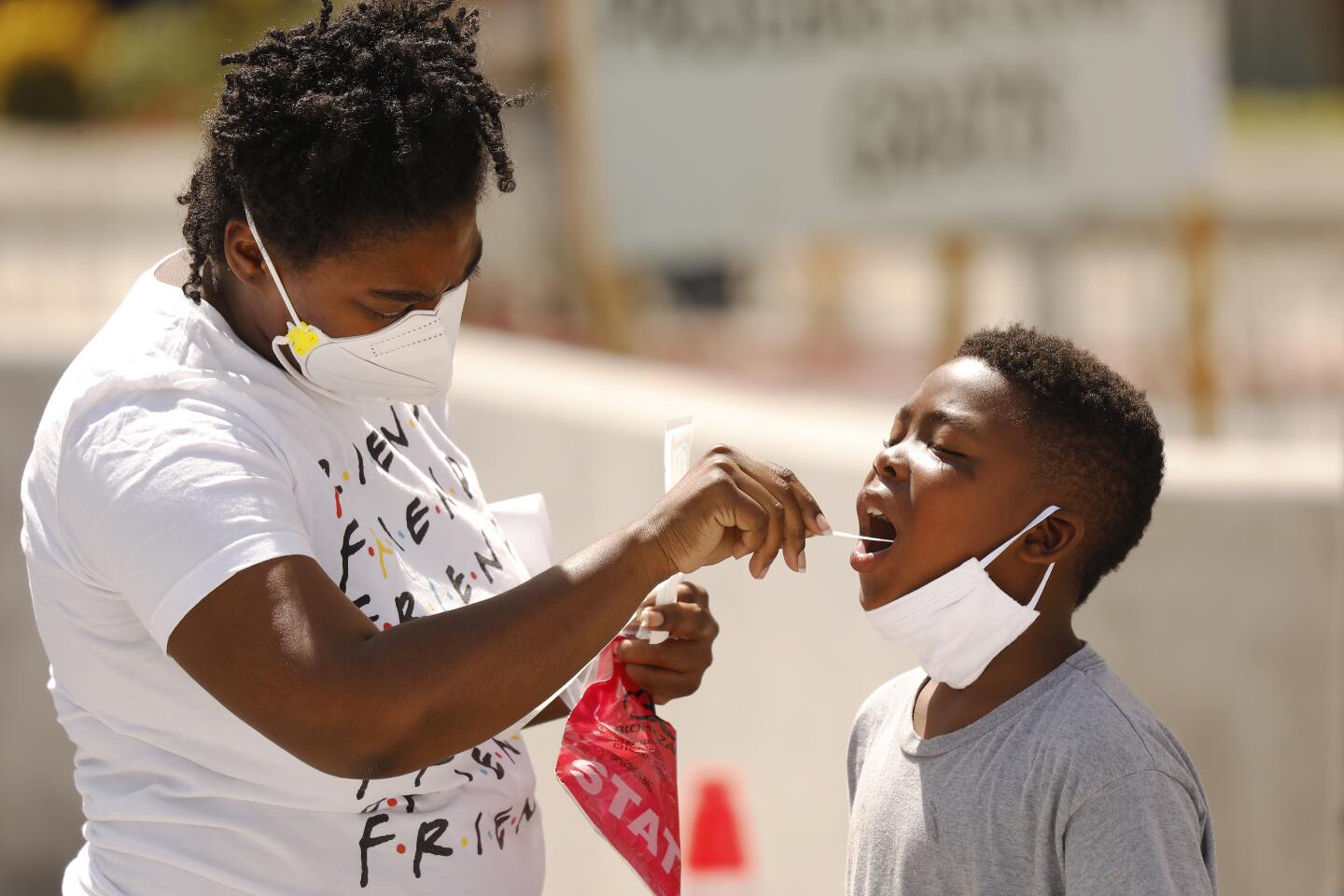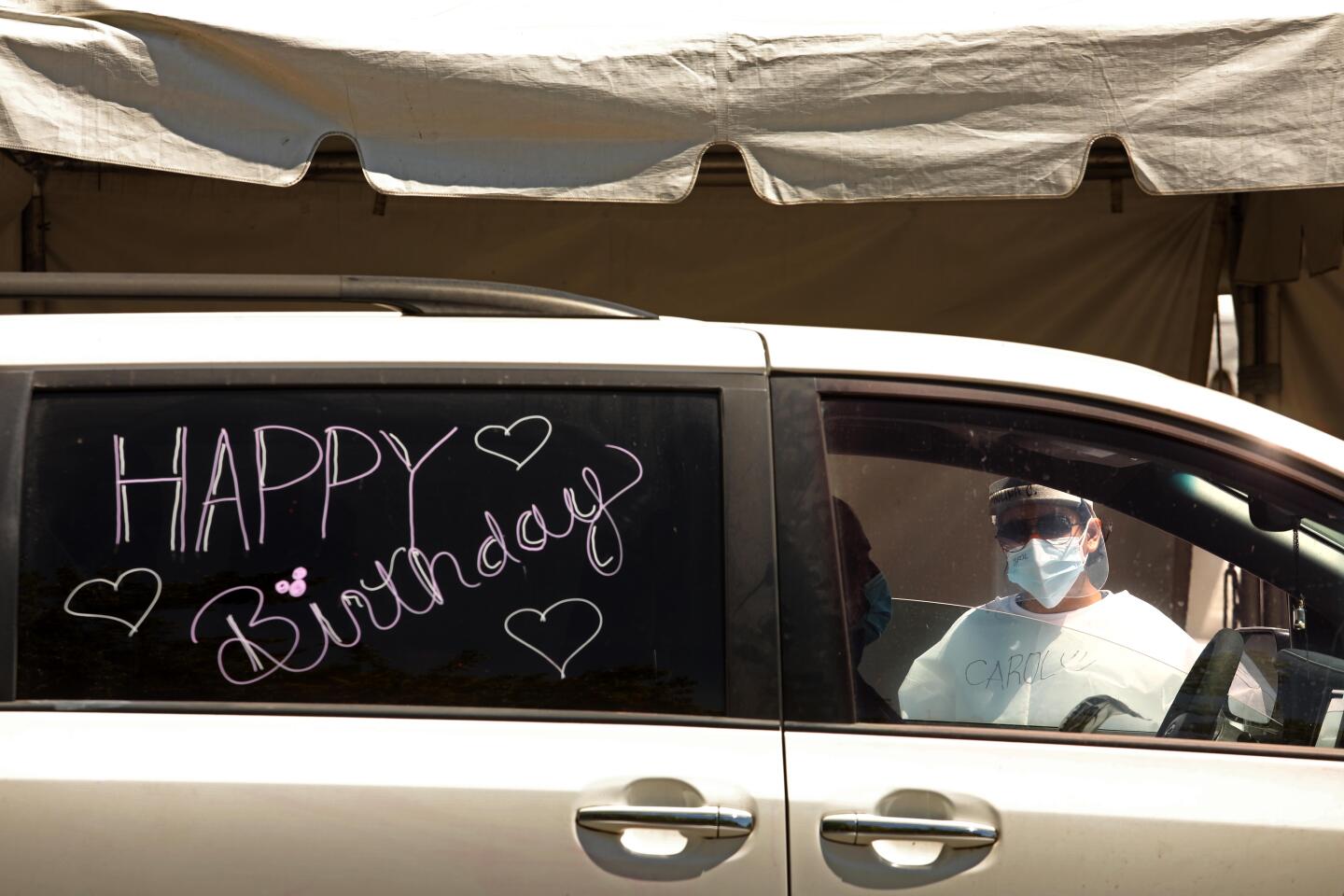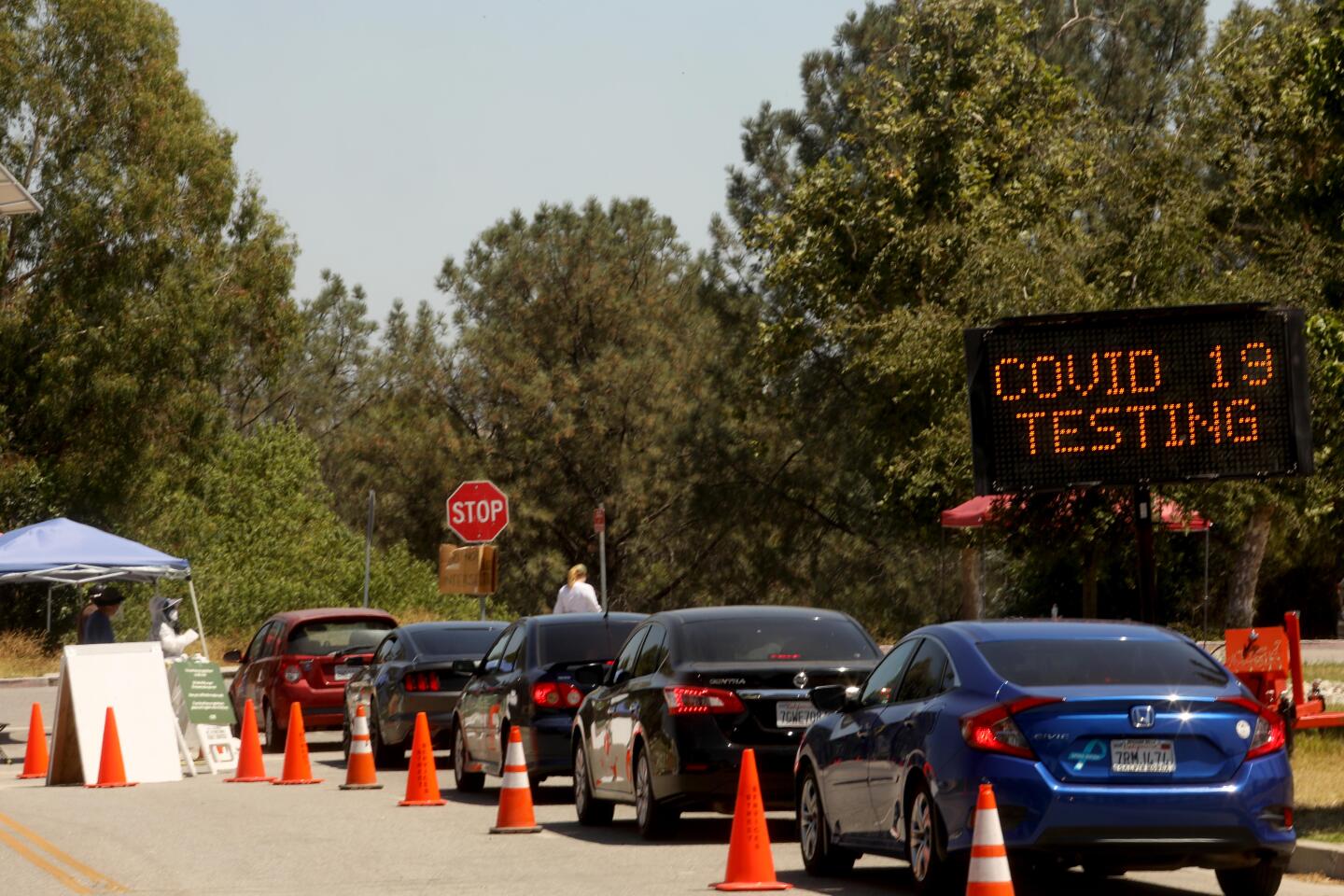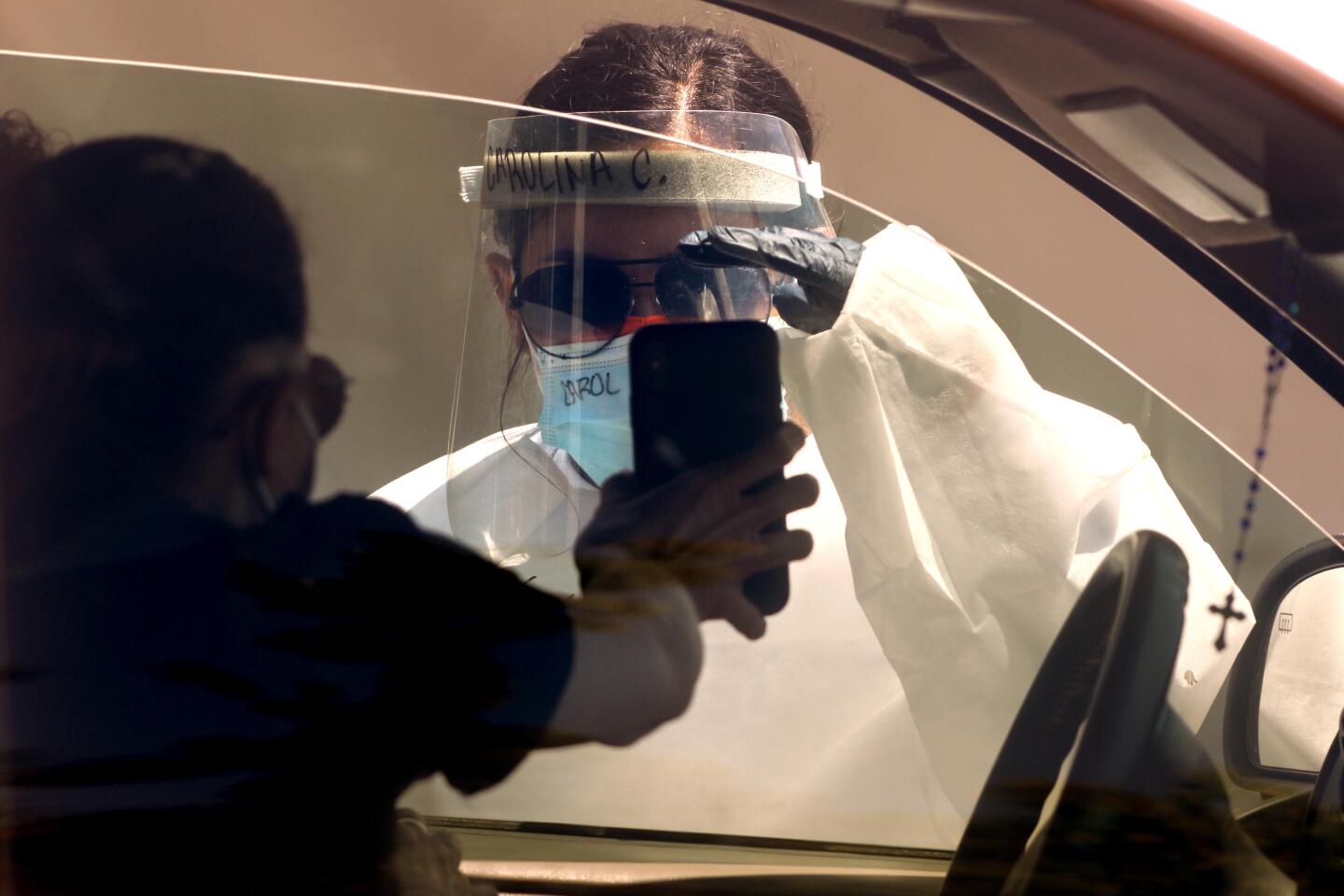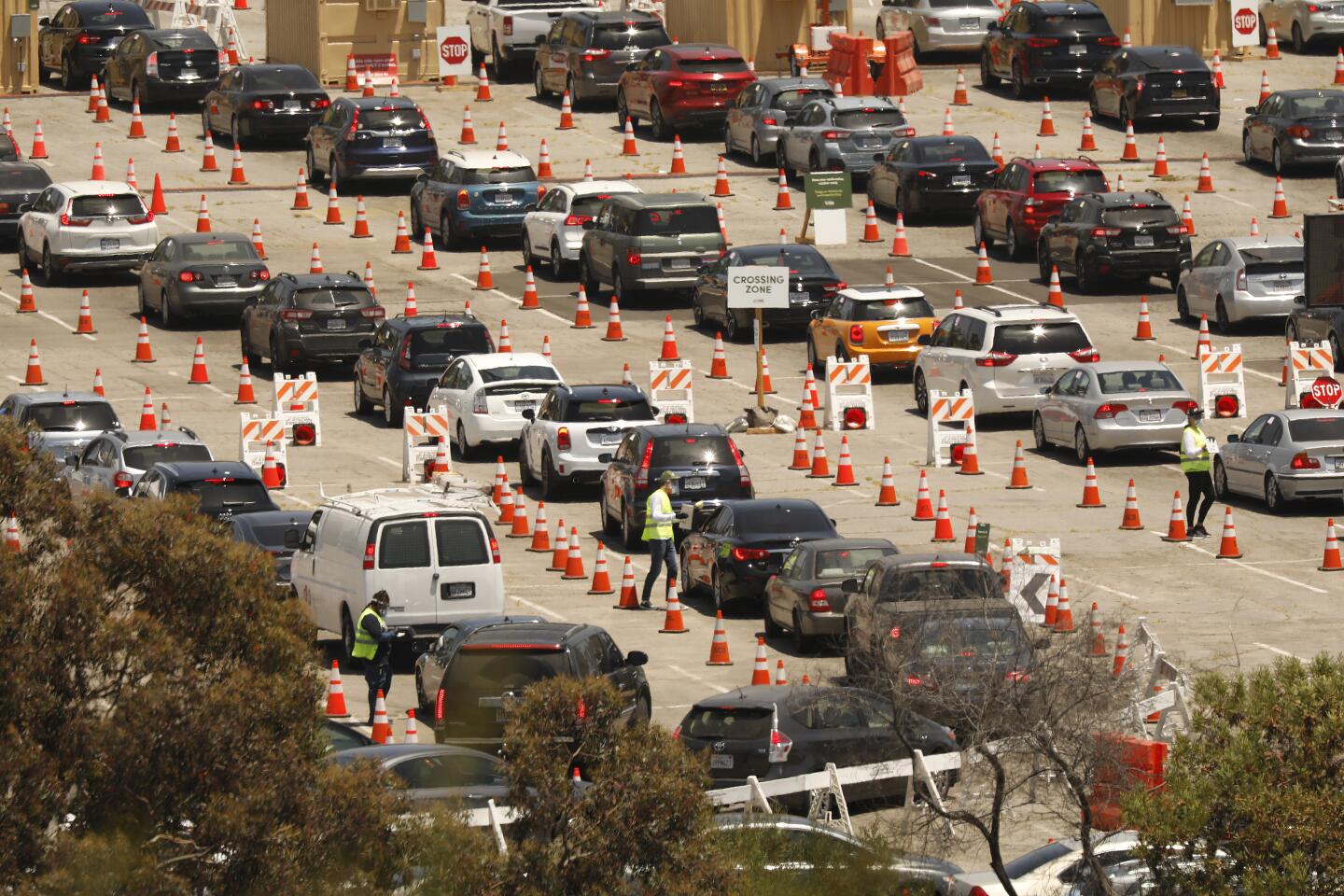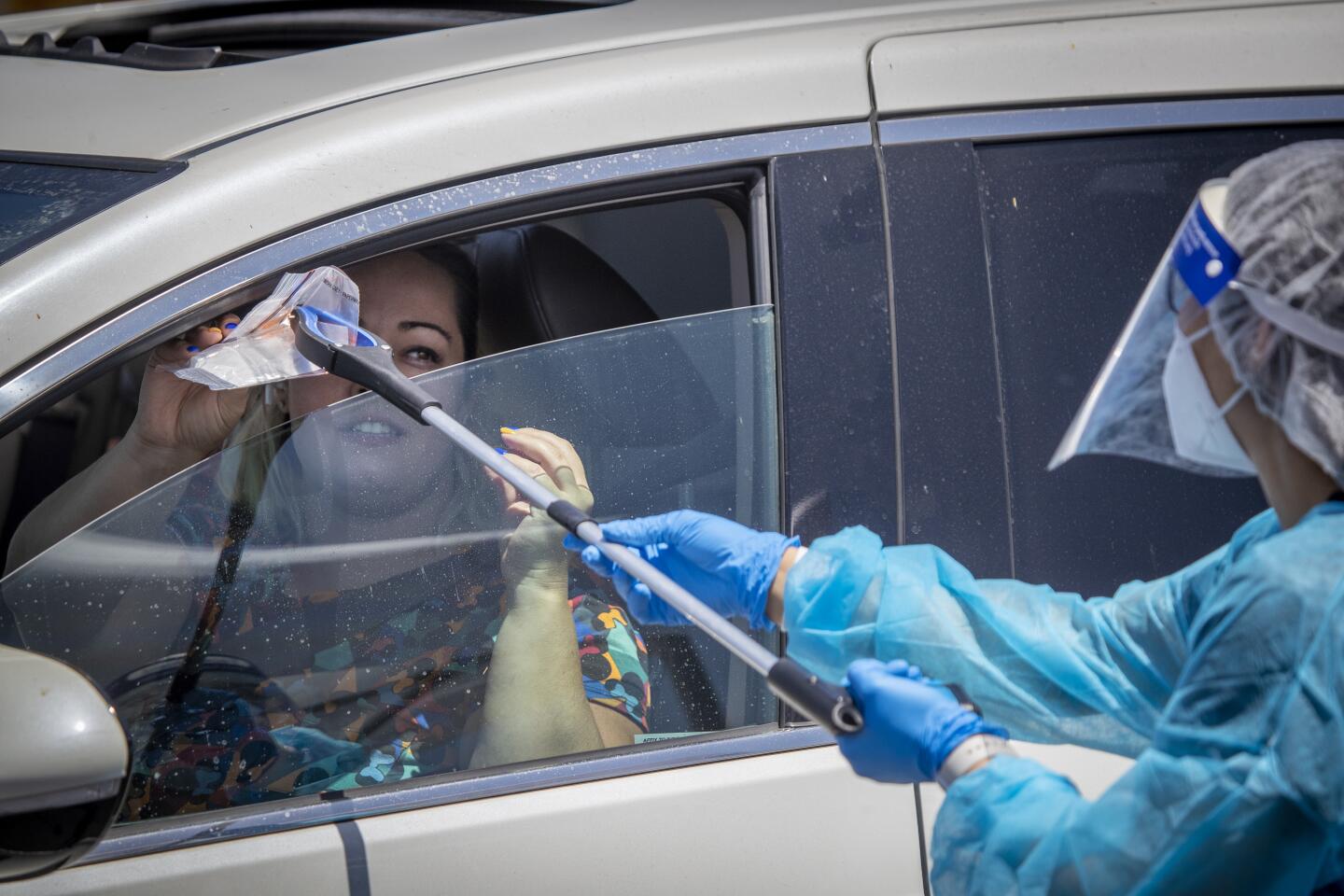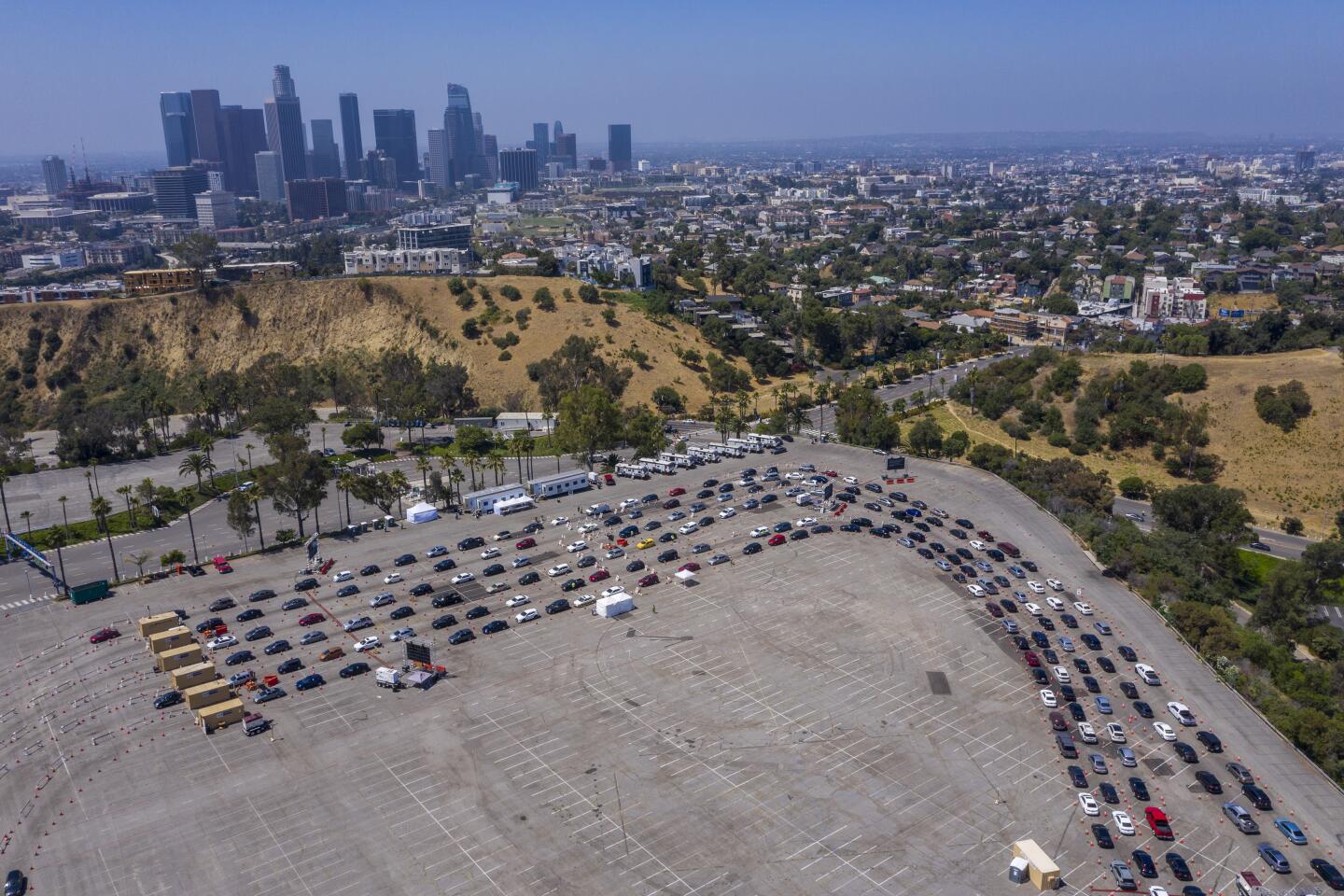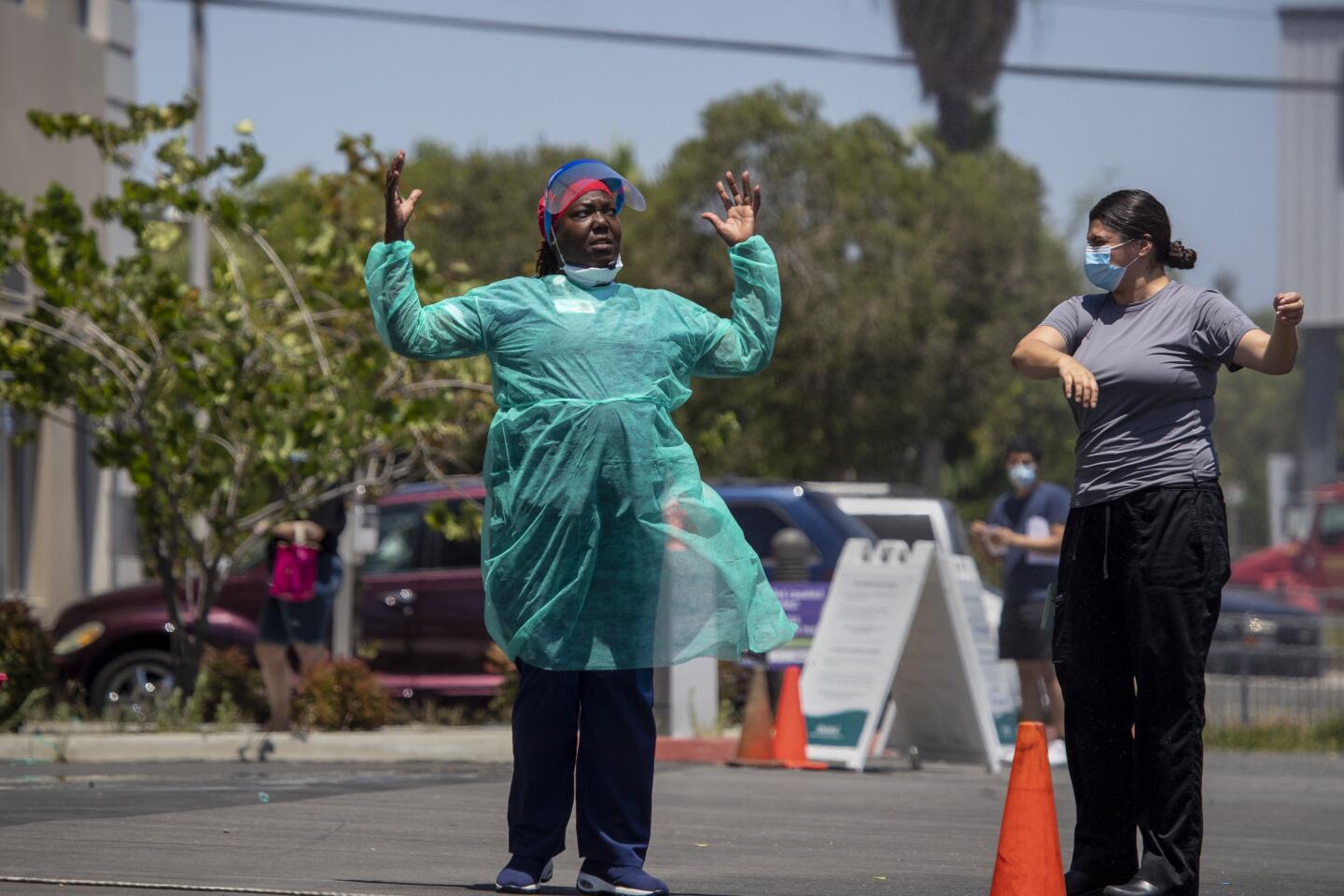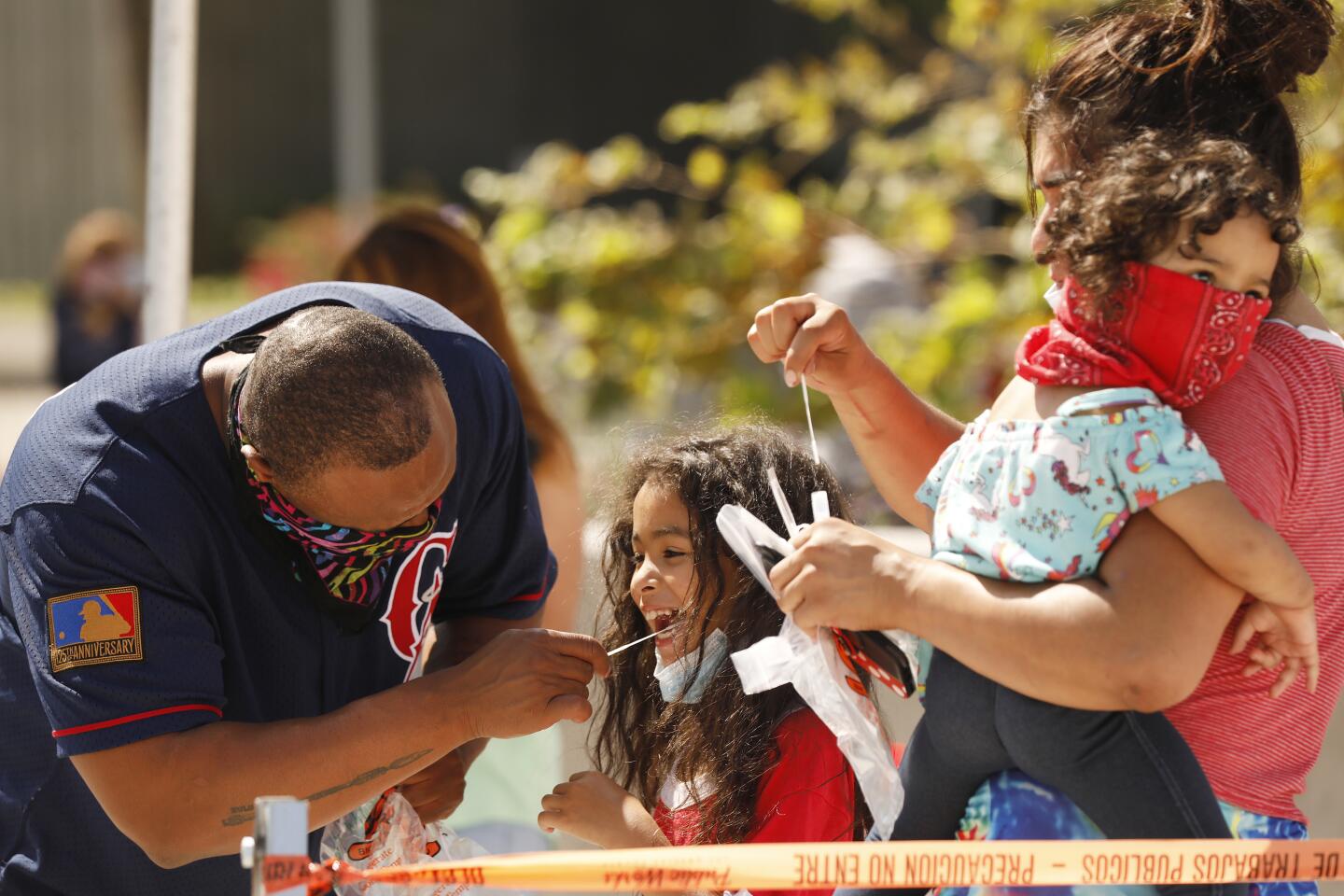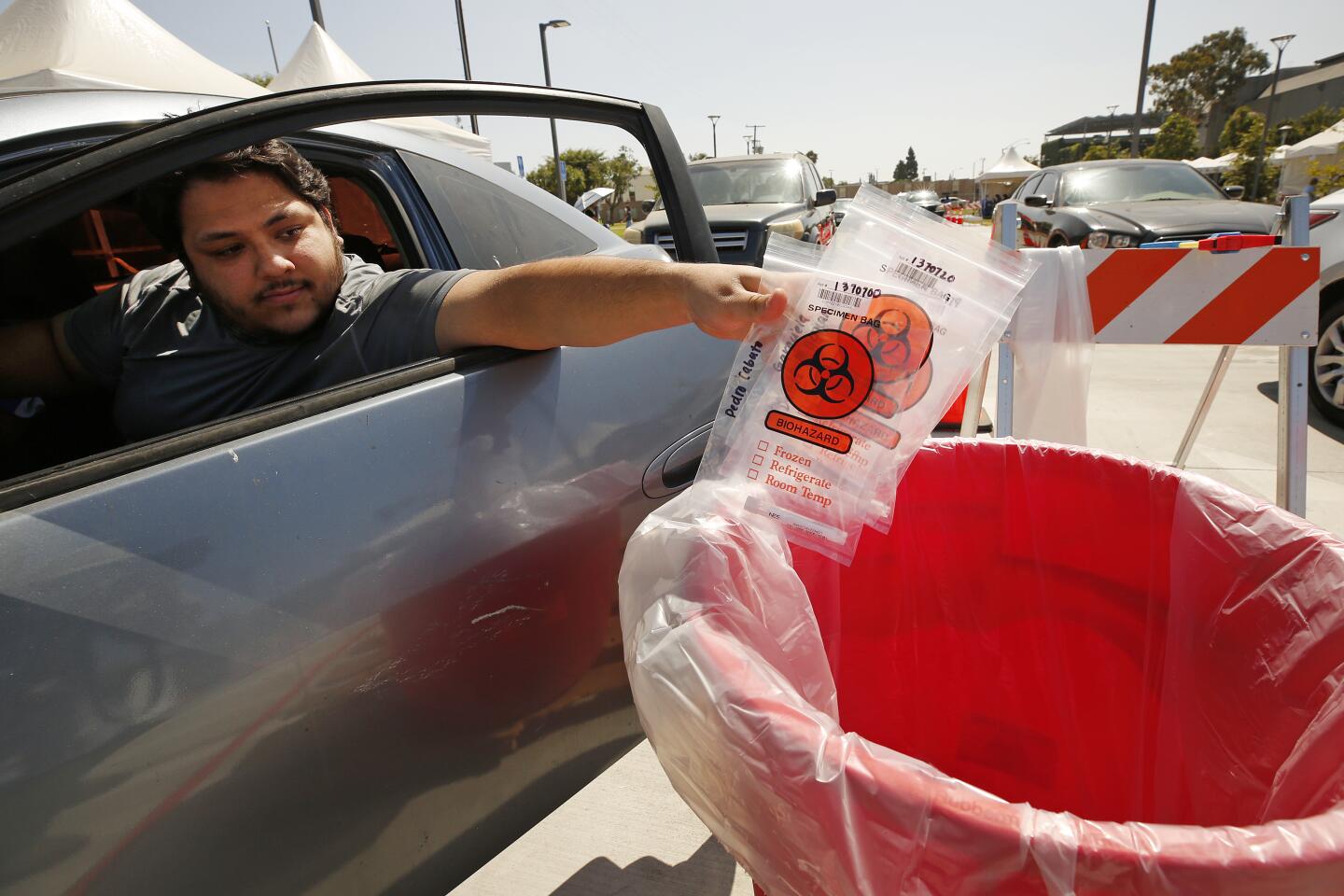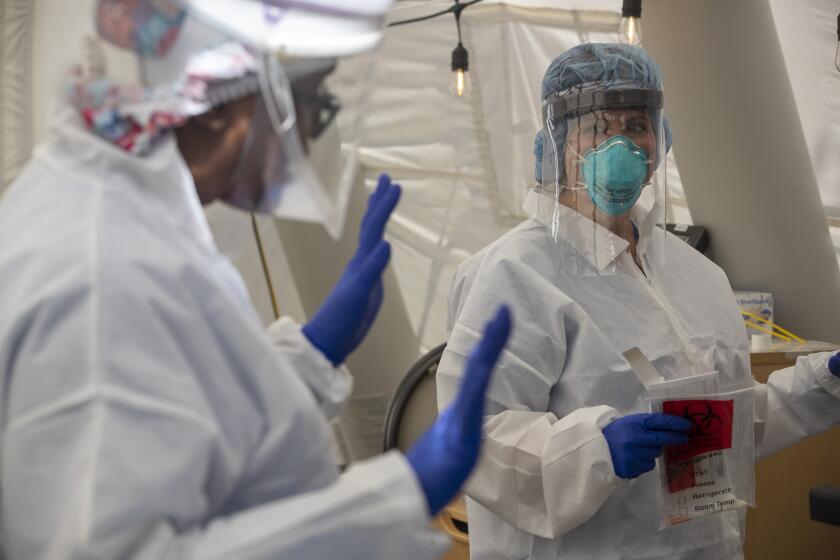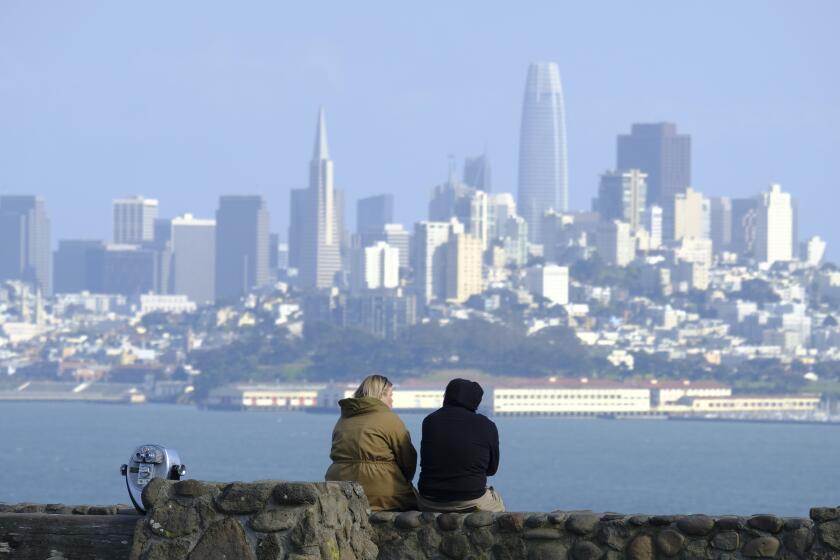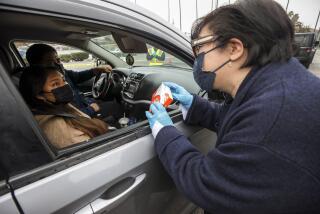California campuses likely to remain closed amid coronavirus spike, state schools chief says
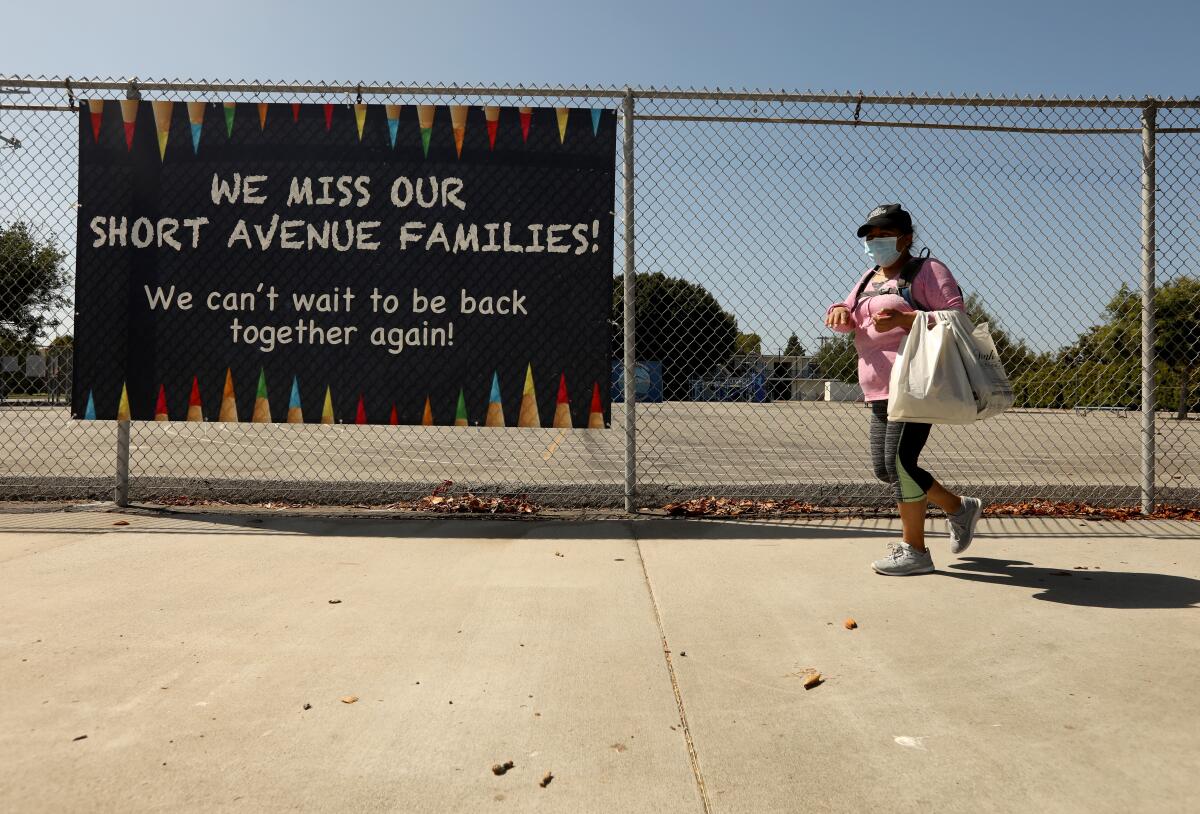
With the first day of school just weeks away, California campuses should be prepared to offer distance learning instead of in-person instruction if coronavirus conditions don’t improve, state Supt. of Public Instruction Tony Thurmond said Wednesday.
Though decisions around opening are ultimately made at the local level, Thurmond said the safety of students, staff and instructors needs to be the top priority.
“I do think that, if school had to open tomorrow, most of our districts would open in distance learning,” he said during a briefing. “And that is a decision that I think is a good decision if conditions don’t change.”
Some districts have already announced they will forgo on-campus instruction.
The Los Angeles Unified School District will continue with online learning until further notice because of the worsening coronavirus surge, Supt. Austin Beutner announced Monday. San Diego Unified announced the same morning that it, too, would be online-only for the start of the semester.
“At this time, the order of the day is to continue to plan, continue to monitor and, as needed, to create contingency plans if the conditions don’t change,” Thurmond said.
Because of the spike in coronavirus cases, Los Angeles public school campuses will not reopen for classes Aug. 18 and will remain shut indefinitely.
Los Angeles County Supervisor Hilda Solis said Wednesday that, when it comes to how to reopen schools, “the safety of our children and school employees must come first.”
“This virus is unpredictable so, unfortunately, we need to adapt and do so quickly,” she said. “If a district is not able to comply with the safety protocols, and if there is too much community transmission, then it should continue with distance learning.”
The ongoing discussion about what school will look like in the months ahead comes as California continues to lose ground in its battle against COVID-19.
The state reported its largest number of new infections in a single day Tuesday, hospitalizations hit a new high and deaths approached record levels.
The 11,142 cases recorded Tuesday were easily the most confirmed in any one day since the pandemic began, surpassing the previous record of 9,816 on July 9, according to data from The Times’ coronavirus tracker.
The state has now reported at least 9,000 new coronavirus cases in a day five times — all since July 7.
Statewide, more than 6,700 patients who’ve tested positive for COVID-19 are hospitalized, according to the latest official data. That, too, is a new high.
Officials also announced 144 additional COVID-19 fatalities Tuesday, the state’s second-highest single-day death toll.
Los Angeles County continues to bear a disproportionate share of the outbreak. Public health officials there confirmed 4,244 new cases and 2,103 hospitalizations Tuesday — both single-day records.
Over the last few weeks, “hospitalizations have increased significantly, and we are on an upward trajectory,” county Public Health Director Barbara Ferrer said Wednesday.
“The shift from declining rates to increasing rates happened very rapidly, and we now see a three-day average of over 2,000 people hospitalized on a given day, which is more people hospitalized each day for COVID-19 than at any other point during the pandemic.”
The number of average cases confirmed each day has also drastically increased. The seven-day average of new daily cases has increased from 1,452 at the start of June to 2,859.
“This is double where we were at the beginning of June, and it’s higher than it has been at any point in the pandemic,” Ferrer said.
While the mortality rate is stable, the increase in hospitalizations will probably result in increased deaths, she said.
Ferrer announced 44 new fatalities in the county Wednesday — pushing the total death toll past 3,900 — as well as 2,758 new cases, boosting the cumulative count to more than 143,000.
“We are in an alarming and dangerous phase in this pandemic here,” she said.
More than 349,000 total coronavirus cases have been confirmed statewide, and almost 7,300 Californians have died from COVID-19 since the pandemic reached the Golden State.
Communities of color have been particularly hard hit.
A recent Times analysis of statewide data found that for every 100,000 Latino residents, 767 have tested positive. For every 100,000 Black residents, 396 have tested positive. By comparison, for every 100,000 white residents, 261 have confirmed infections.
The recent surge in infections, hospitalizations and deaths has wiped out the progress the state made in the spring, when officials were optimistic that California had successfully “bent the curve” to the point where it was safe to reopen wide sectors of the economy.
Los Angeles County on Tuesday reported the highest single-day count of COVID-19 cases and related hospitalizations since the pandemic hit the U.S.
Health officials repeatedly said they expected that opening additional businesses and gathering spaces would likely lead to a rise in cases.
However, the virus rebounded with alarming speed and ferocity, forcing the state to pause or roll back many reopenings and pushing some areas to the brink of reimposing the sort of strict stay-at-home orders that, just weeks ago, seemed to be in the rearview mirror.
L.A. Mayor Eric Garcetti has warned that the city is inching closer to another shutdown as dangers posed by the coronavirus continue to loom.
“We made so much progress in March and April,” he said Monday. “There is no question that the pandemic has gotten worse, here in L.A., across California and across this country. … We did the right thing before. And now we have to do the right thing again.”
While nothing can be off the table, Ferrer said Wednesday that “none of us want to go back” to a safer-at-home order. Ultimately, though, she said that decision will largely depend on residents and businesses behaving responsibly and taking appropriate safety precautions.
“It’s for certain that, if we do a really good job on implementing all of the tools that we have at hand, we can get back to slowing the spread, and that makes it much less likely that we return to safer-at-home,” she said. “We don’t have a lot of time, though.”
Experts say the failure to protect Latino essential workers has contributed to California’s mid-summer spike of the coronavirus.
Amid the continuing surge, Gov. Gavin Newsom announced Monday statewide restrictions to again halt all indoor dining at restaurants and close bars, zoos and museums.
Most counties, including Los Angeles, San Bernardino, Orange and Riverside, must shutter gyms, houses of worship, hair salons, malls and other businesses under the new order. Offices with nonessential workers in those counties also must close.
“The virus is not going away anytime soon,” Newsom said.
Dr. Grant Colfax, San Francisco’s director of public health, said Wednesday that the rate of coronavirus transmission has continued to climb in the Bay Area and that the city would not move forward with reopening.
“Unfortunately, we are experiencing a surge in COVID-19 infections that is affecting our community’s health and reopening plans,” he said during a virtual news conference.
“The virus is not only still out there,” he added, “it is out there more than ever before. It continues to spread locally in our community and throughout the Bay Area region.”
On Monday, Colfax said each person with the disease was infecting 1.25 others, a number he said had to come down. On Wednesday, that number was at 1.3.
San Francisco’s health chief says the rate of transmission of the coronavirus continues to climb in the Bay Area and the city won’t move forward with reopening.
“If we do not do better,” he said, “we are looking at major problems by late August and September with an average peak of 900 hospitalized patients by early October.”
Hospital capacity in the city has remained in relatively good shape this week, though, with 27% of acute beds and 28% of intensive care beds available, he said.
Elsewhere in the Bay Area, Alameda County officials announced Wednesday that the state had approved its attestation paperwork — clearing the way for outdoor dining to resume, with face coverings required when not eating or drinking, and for the Oakland Zoo to open for outdoor activities, provided safety measures are in place.
However, since the county has remained on the state’s monitoring list for three days, indoor malls will have to close and places of worship can hold only outdoor services.
Two months ago, California looked like a coronavirus success story. Now cases and hospitalizations are up and the state is rolling back its reopening.
California’s backslide from seeming success story to cautionary tale is reflected in its monitoring list of counties that are experiencing elevated disease transmission and/or hospitalizations. As of Wednesday, most of California’s 58 counties were on the list.
Officials have reported that outbreaks at indoor work settings and factories as well as private gatherings are major drivers of the state’s recent surge.
At the same time, high demand and a shortage of supplies are making it more difficult for Californians to get tested for coronavirus infection. Health and Human Services Secretary Mark Ghaly said Tuesday that the state is working on new guidelines for testing to ensure that the most vulnerable have prioritized access.
“Although we want to maintain access for the general population to testing, focusing first on those whose clinical course or community can really benefit from this more targeted testing approach — not as an exclusive but as an initial priority group — is very important for us. Especially during this time where transmission is high and turnaround times have increased,” he said.
Times staff writers Ben Welsh, Stephanie Lai, Rong-Gong Lin II , Howard Blume, Melody Gutierrez, Hannah Fry and Maura Dolan contributed to this report.
More to Read
Start your day right
Sign up for Essential California for news, features and recommendations from the L.A. Times and beyond in your inbox six days a week.
You may occasionally receive promotional content from the Los Angeles Times.
